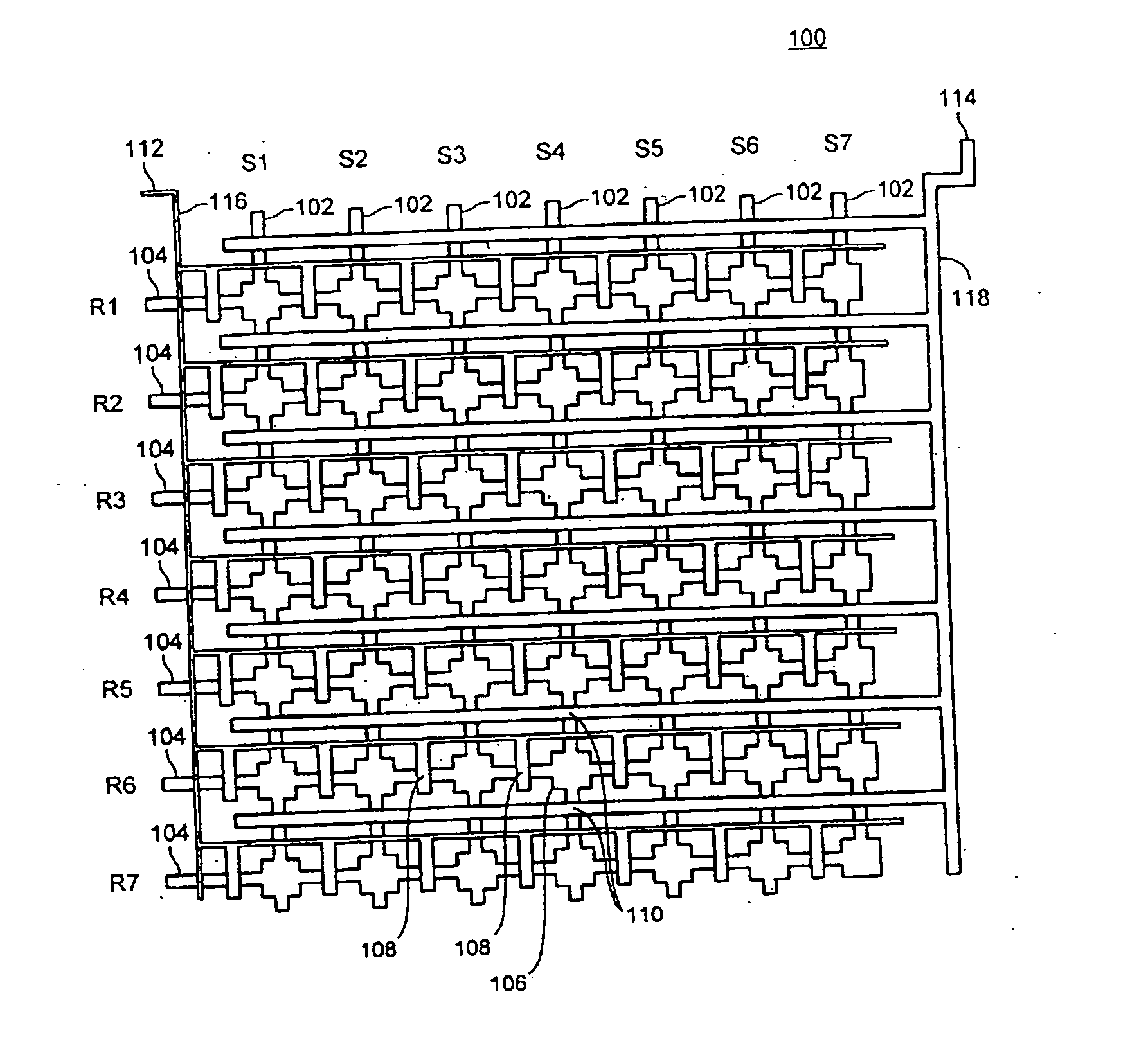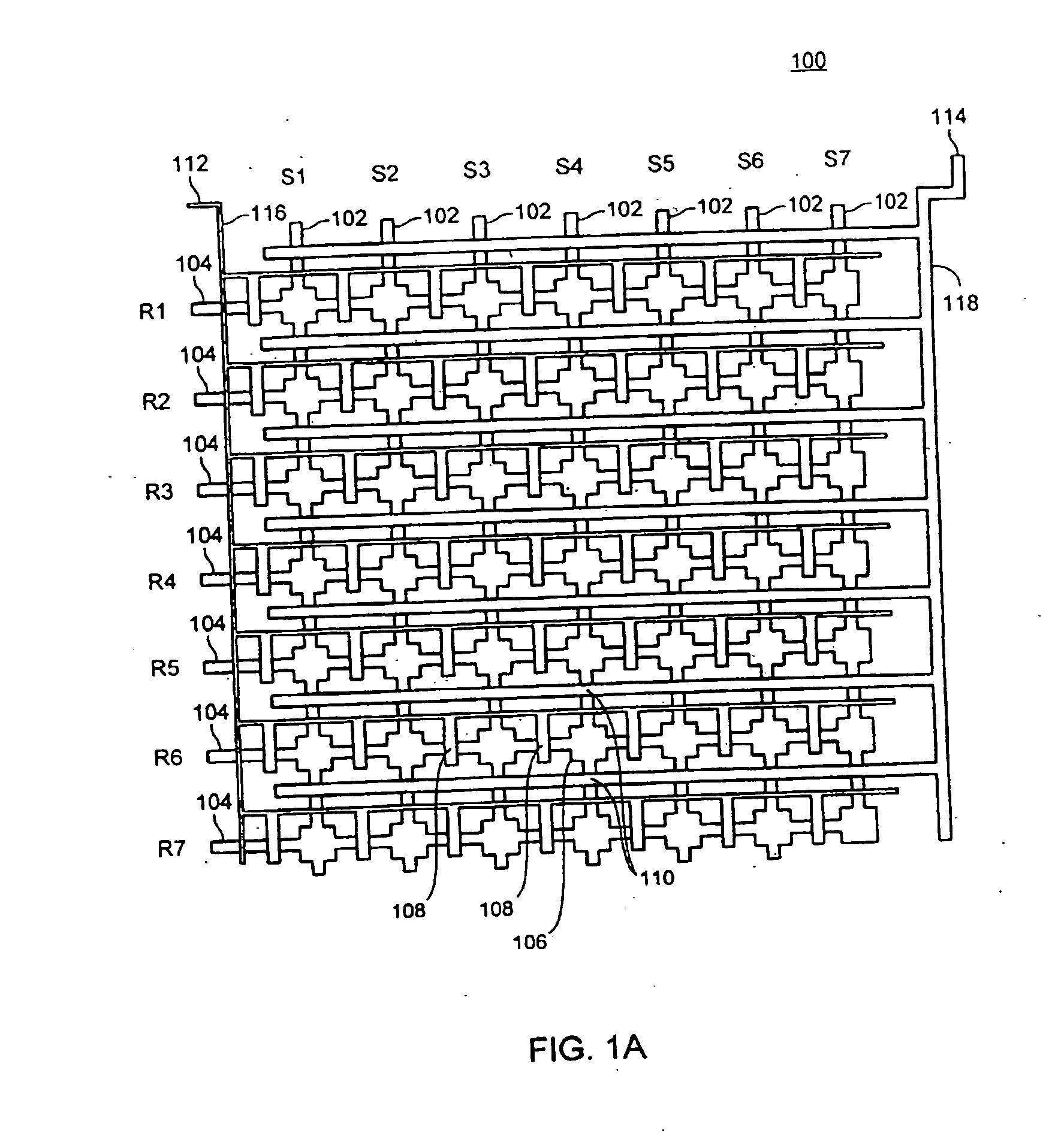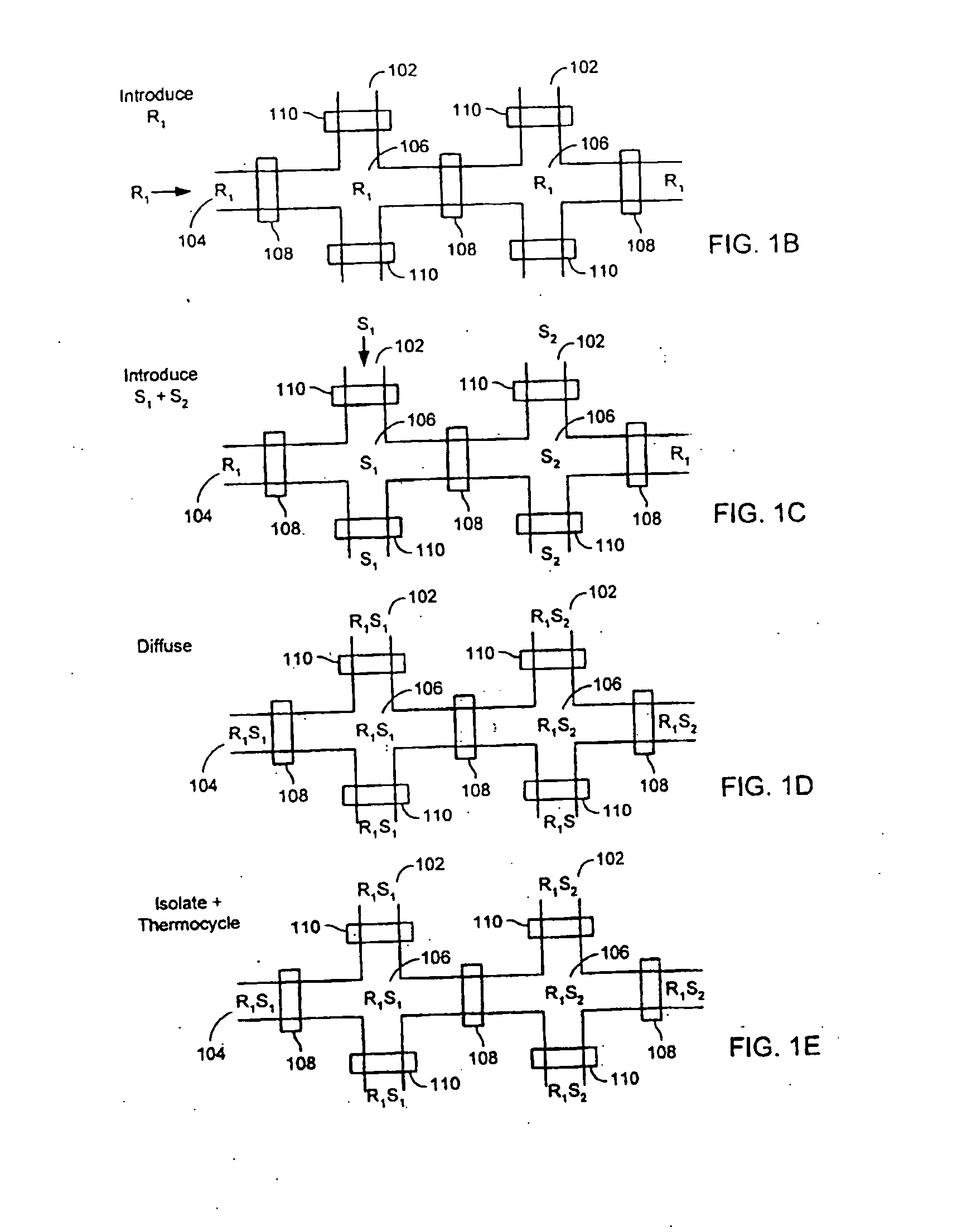Microfluidic device and methods of using same
- Summary
- Abstract
- Description
- Claims
- Application Information
AI Technical Summary
Benefits of technology
Problems solved by technology
Method used
Image
Examples
example 1
A. Example 1
Signal Strength Evaluations
[0221] 1. Introduction
[0222] The purpose of this set of experiments was to demonstrate that successful PCR reactions can be conducted with a microfluidic device of the design set forth herein with signal strength greater than 50% of the Macro TaqMan reaction.
[0223] 2. Microfluidic Device
[0224] A three layer microfluidic device, fabricated using the MSL process, was designed and fabricated for conducting the experiments described in the following example. FIG. 7A shows a cross-sectional view of the device. As shown, the device 700 includes a layer 722 into which is formed the flow channels. This fluid layer 722 is sandwiched between an overlaying layer 720 that includes the control and guard layers and an underlying sealing layer 724. The sealing layer 724 forms one side of the flow channels. The resulting three-layer structure is affixed to a substrate 726 (in this example, a slide or coverslip), which provides structural stiffness, increas...
example 2
B. Example 2
Spotting Reagents
[0237] 1. Introduction
[0238] The purpose of the experiment was to demonstrate successful spotted PCR reactions in a microfluidic device. The term “spotted” in this context, refers to the placement of small droplets of reagents (spots) on a substrate that is then assembled to become part of a microfluidic device. The spotted reagents are generally a subset of the reagent mixture required for performing PCR.
[0239] 2. Procedure
[0240] i. Spotting of Reagents
[0241] Routine spotting of reagents was performed via a contact printing process. Reagents were picked up from a set of source wells on metal pins, and deposited by contacting the pins to a target substrate. This printing process is further outlined in FIG. 9. As shown, reagents were picked up from a source (e.g., microtiter plates), and then printed by bringing the loaded pin into contact with the substrate. The wash step consists of agitation in deionized water followed by vacuum drying. The system...
example 3
C. Example 3
[0251] 1. Introduction
[0252] The purpose of the following experiments was to demonstrate that genotyping experiments can be conducted utilizing a microfluidic device or chip such as described herein. Specifically, these experiments were designed to determine if reactions conducted in the device have sufficient sensitivity and to ensure that other primer / probe sets, besides β-actin, can be performed in the microfluidic device.
[0253] 2. Methods / Results
[0254] i. RNase P Experiment
[0255] RNase P TaqMan reactions (Applied Biosystems; Foster City, Calif.) were performed in a microfluidic device as described in Example 1 to demonstrate that other primer / probe sets produce detectable results. RNaseP reactions also require a higher level of sensitivity because the RNaseP primer / probe set detects a single copy gene (2 copies / genome) in contrast to the β-actin primer / probe set. The β-actin set detects a single copy β-actin gene and several pseudogenes, which collecti...
PUM
 Login to View More
Login to View More Abstract
Description
Claims
Application Information
 Login to View More
Login to View More - R&D
- Intellectual Property
- Life Sciences
- Materials
- Tech Scout
- Unparalleled Data Quality
- Higher Quality Content
- 60% Fewer Hallucinations
Browse by: Latest US Patents, China's latest patents, Technical Efficacy Thesaurus, Application Domain, Technology Topic, Popular Technical Reports.
© 2025 PatSnap. All rights reserved.Legal|Privacy policy|Modern Slavery Act Transparency Statement|Sitemap|About US| Contact US: help@patsnap.com



